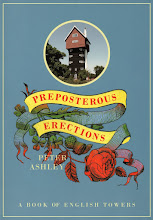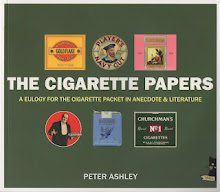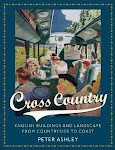
Staring at my Len Deighton collection this evening, as one does, I looked again at this superb Raymond Hawkey cover for the first Penguin edition (1965) of Horse Under Water. This was the second volume Deighton wrote after his debut The Ipcress File, and his Royal College of Art chum Hawkey was involved with the covers right from the start. The early hardbacks are now much sort after classics, with monochrome photography on white backgrounds and minimal typography, but Hawkey was presented with a particular problem here. The first novel had been made into what is now, quite rightly, a cult film, and Penguin wanted this cover, albeit for a different book, to be an all-singing, all-dancing reference to the movie. Frustrated at having his more discreet ideas turned down, Hawkey produced this in desparation. Yes, here's Michael Caine in big dot newsprint, with those thick-framed spectacles ensuring a passing resemblance to Deighton himself. But then the designer crossly caught the attention of the book-buying public with those big shouting stripes, just to make a point it seems. The first print run of 60,000 copies was sold out in 48 hours. To me, this is an essential item in the iconography of the sixties, the stripes immediately bringing to mind the security barriers at Cold War checkpoints. Hawkey continued the bold graphic theme with the original Penguin covers for Funeral in Berlin (orange and white) and Billion Dollar Brain (silver and black). Somehow you can't imagine tie-in covers ever being this good again. Horse Under Water, although optioned for production, was never made into a film.







4 comments:
Excellent post. Highly evocative cover. 60,000 copies in 48 hours! Sensational.
I spent a tense hour passing through Checkpoint Charlie in 1982. In West Berlin with a theatre company, I had some free time and felt compelled to have a look at the other side. I remember, vividly, that it felt colder in East Berlin. I also remember the look of astonishment on the face of the girl in the record shop when I asked how much the Haydn LP cost. 'Twelve Marks' she told me, witheringly.
I worked out later that, of course, all LPs cost twelve marks in East Germany, everywhere, in every record shop, because that's what the State decreed. Always had, always would.
Got that wrong didn't they?
Jolly good books and jolly good writer! But, why was it always the boys who featured in these Cold War tales? So much of real SOE activity in France in WW2 was about brave women (see http://www.64-baker-street.org/); did we all pack up after that and return to needlework and raising children?
Justin: Is it true, as in Deighton (therefore probably is, knowing his meticulous research)that East Germany's air was continually polluted with brown smoke? He puts it down to coal burning power stations that used an unspeakable brown coal.
You're right of course Camilla, but if you like Deighton then you will be relieved to read his Bernard Sampson trilogies, with lots of wife / girlfriend plot lines. And they're not at home doing crochet.
Can't say I remember the air being brown. I do remember an overwhelming sense of grey; grey skies, grey clothes, grey people. Walking back into colourful, decadent (and rich) West Berlin was an enormous relief.
Post a Comment